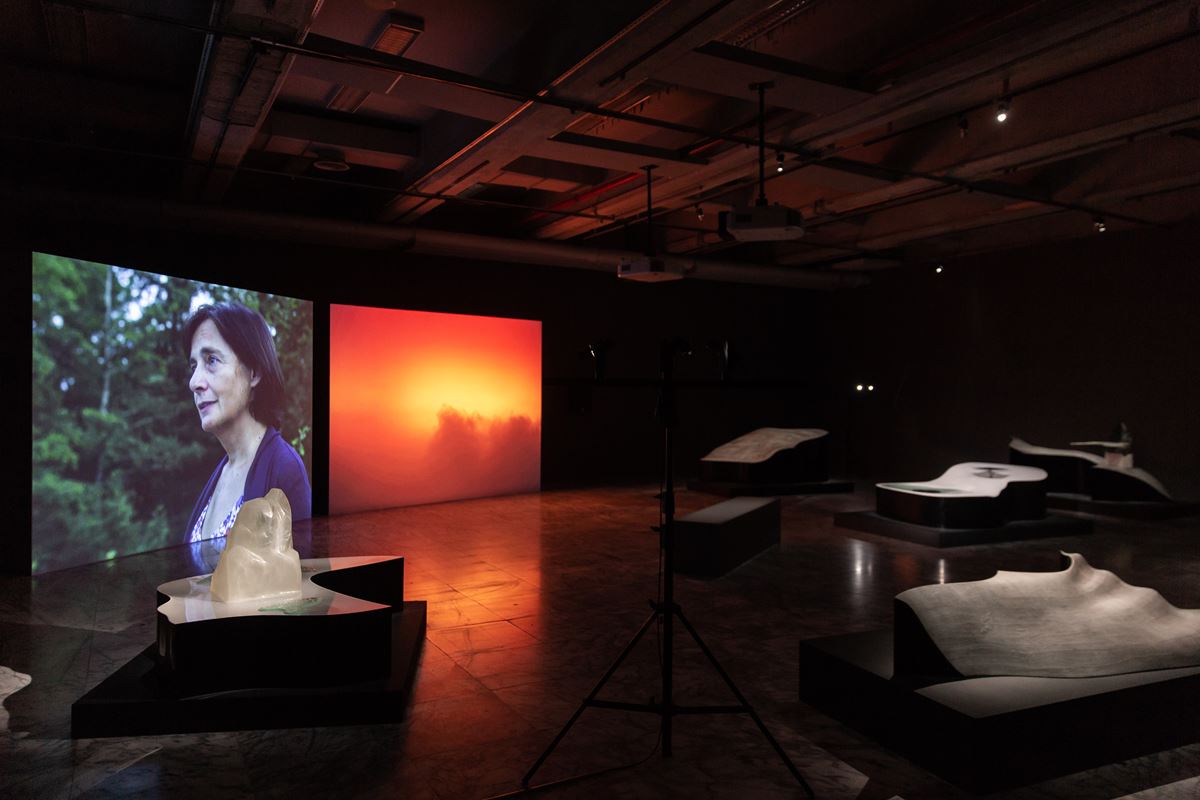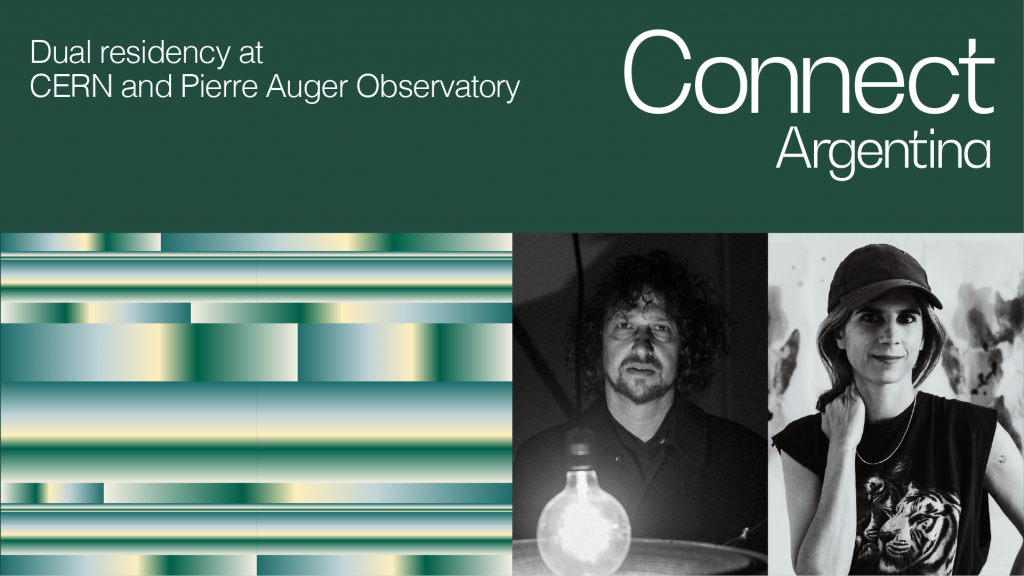- Tags
- Art commissions
- Author
- Ana Prendes

June Balthazard and Pierre Pauze’s video installation Mass, alongside Liu Chuang’s film Lithium Lake and the Lonely Island of Polyphony, debut at the Taipei Fine Arts Museum
The 12th Taipei Biennial, titled You and I Don’t Live on the Same Planet, created a fictional ‘planetarium’ where artists, activists, and scientists explored the gravitational pull of metaphorical ‘planets.’ Each planet embodied a distinct worldview, representing both diverse material realities and perspectives. Co-curated by Bruno Latour, Martin Guinard, and Eva Lin, the exhibition at the Taipei Fine Arts Museum runs from November 2020 through March 2021.
Among the featured artworks, French artists June Balthazard and Pierre Pauze premiered Mass (2020). Straddling documentary and fiction, the video installation brings a narrative film and sculptural installation into dialogue, oscillating between an otherworldy landscape and a film studio.

Mass features CERN particle physicist Chiara Mariotti (2018 EPS Emmy Noether Laureate) and Nobel Prize-winning astrophysicist Michel Mayor. The scientists expose a central debate in contemporary physics. For Mayor, the void refers to cosmic voids: vast, low-density regions in the universe with minimal matter. As a particle physicist, Mariotti understands it as a quantum vacuum, a region with the lowest possible energy filled with fluctuating fields and particles, making it a highly active space.
Their exchange highlights the tension between Einstein’s theory of relativity, which describes events at a cosmic scale, and quantum physics, which governs the subatomic world—two frameworks that have yet to fully merge into a unified theory.
‘Working with artists reminds you of the purpose of what you do and reinvigorates your determination towards fundamental research’

The making of Mass
Balthazard and Pauze first visited CERN in August 2019, guided by Chiara Mariott. The artists’ conversations with Mariotti about the Higgs Boson, events in particle physics, and the nature of the vacuum inspired them to cast her as a protagonist in the film. Mariotti, in turn, invited Nobel laureate Michel Mayor to join the film.
The film also delves into a fable-like dimension. Mayor is portrayed in the Thoiry Caves, where he retreats to reflect on the mysteries of the universe, an unconventional setting for a Nobel Prize winner. Mariotti, on the other hand, is filmed at the CMS Experiment, shrouded in darkness, and in her home and its surroundings. The soundtrack, composed by Domenico Vicinanza, enriches the work with a piece performed by the Thoiry Orchestra, featuring Mariotti playing the flute. In an intimate scene, she also performs Hildegard von Bingen’s O Rubor Sanguinis. The film creates an unsettling journey through reality and fiction.

‘Working with artists reminds you of the purpose of what you do and reinvigorates your determination towards fundamental research’, Mariotti reflected on her experience working with Balthazard and Pauze.
The biennial also featured works that address the planetary scale of human intervention in geological evolution. Liu Chuang’s film Lithium Lake and the Lonely Island of Polyphony presents a speculative account of the relationship between song and the origins of technology. It traces the intercontinental route of lithium ore, a critical material for the transition to carbon-neutral systems: from the Uyuni Salt Flat, the largest lithium lake in the Chilean Atacama Desert, across the Pacific Ocean, to the East of Asia. The artist filmed across the Tibetan Plateau, the Hsinchu Science Park in Taiwan, and CERN.

The film considers traditional polyphonic music a form of prototypical technology. Polyphony is now understood to have been a common form of music in ancient times, shaking the view of music history as a linear progression from monophonic to polyphonic. Through atmospheric research based on archival materials and images, Chuang analysed the sonic topography of the routes and studied East Asian traditional polyphonic music to further question land-based spatial politics. By weaving dialogues and experimental combinations of matters and events of different scales, the work lends emotional depth to the sensory worlds centred around the various species featured in the narrative. The narrative considers the ancient wisdom of polyphonic singing to be significant to current technological lock-ins like lithium extraction.
As Martin Guinard, co-curator of the Biennial, remarked, ‘If we want to find ways to become sensitive to the New Climatic Regime, but also to cope with it, it is necessary to create a dialogue between three different forms of aesthetics: the political, the scientific and the artistic. Artists and scientists have methodologies which are, of course, incommensurable, but this kind of dialogue can be extremely productive.’





